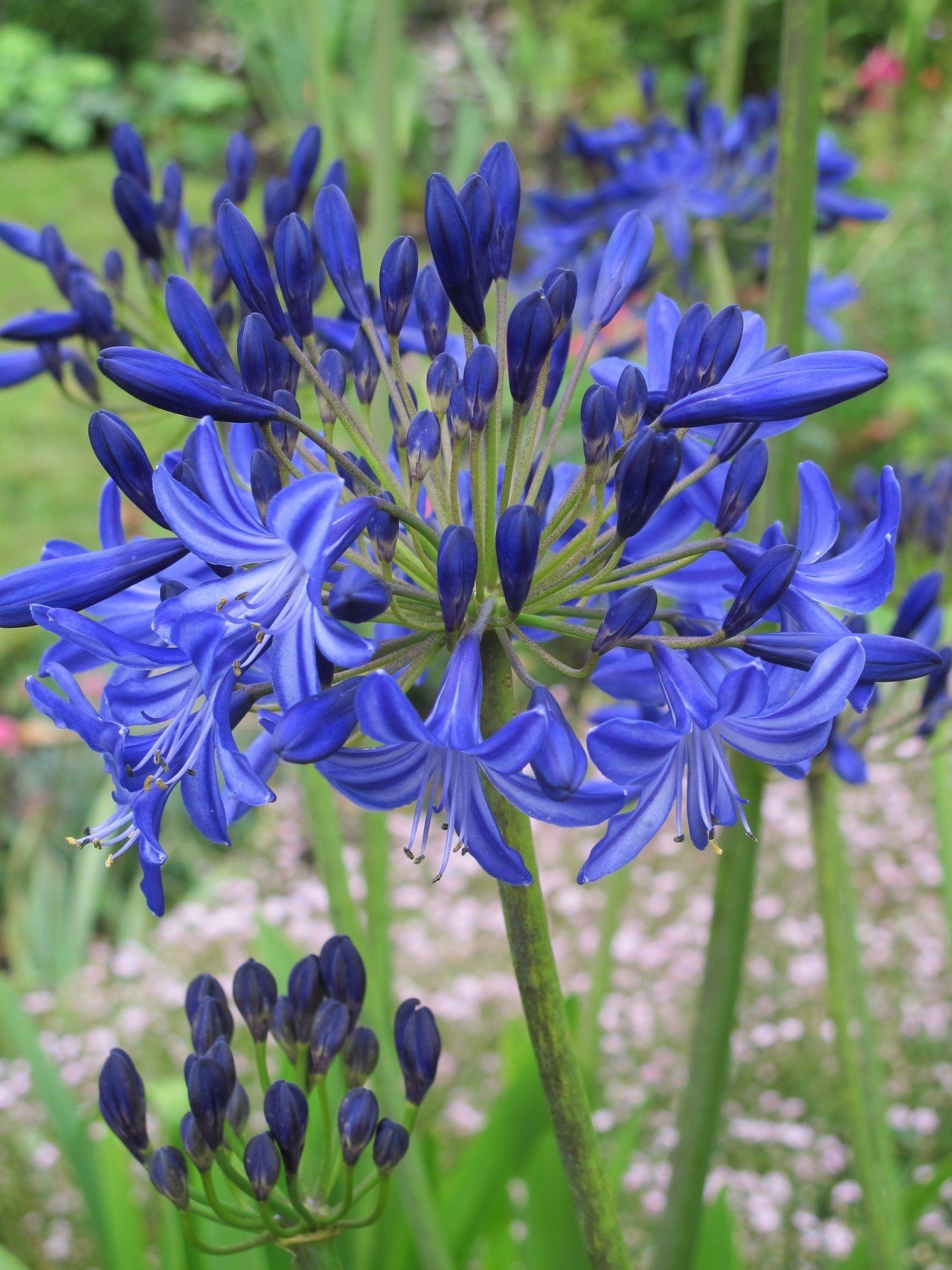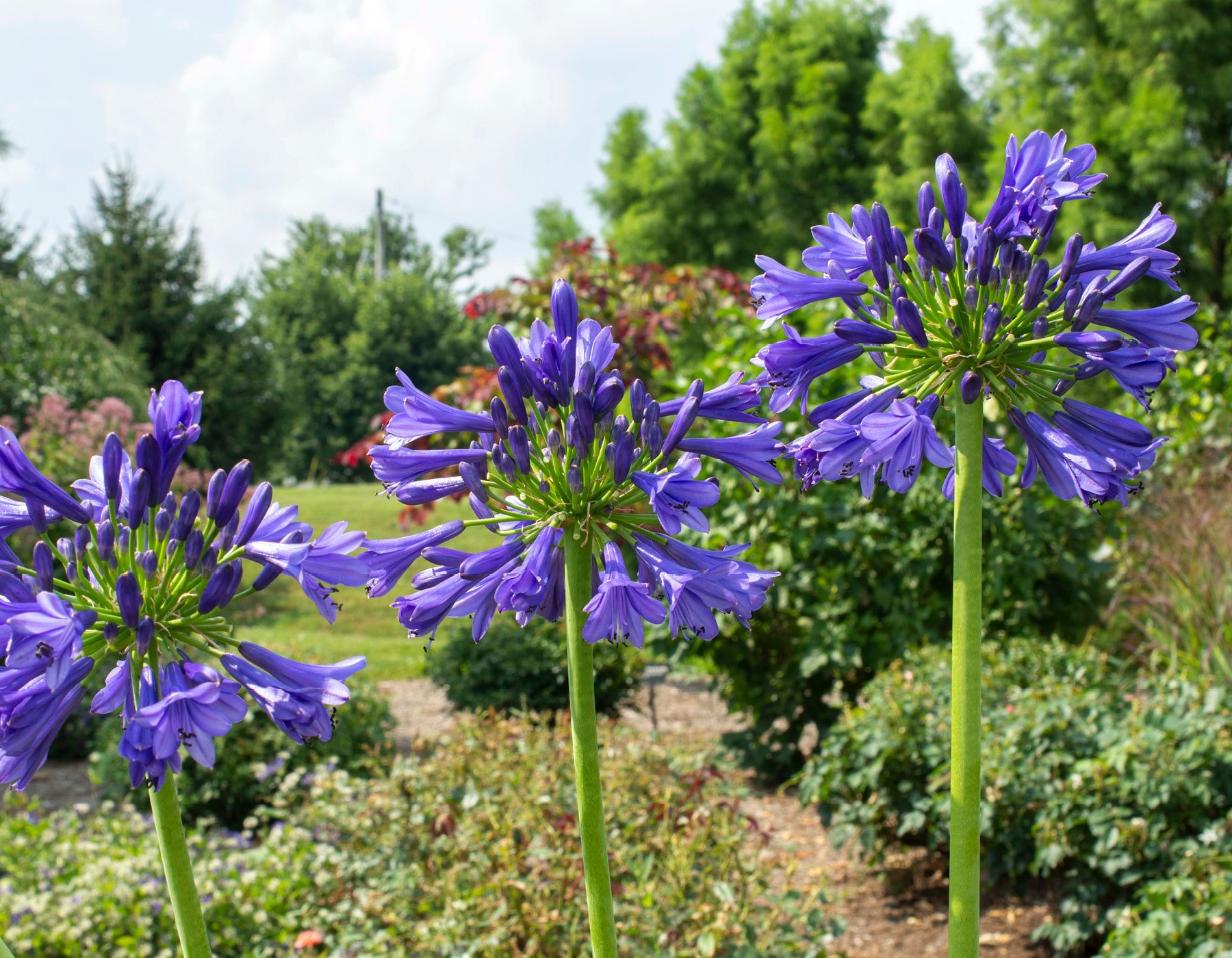Agapanthus Care Tips for Lush and Vibrant Flowers
Agapanthus Care Tips for Lush and Vibrant Flowers
Blog Article
Understanding the Art of Agapanthus Care: Important Steps for Healthy Development and Vivid Blooms
In the realm of horticulture, the cultivation of agapanthus stands as a fulfilling undertaking for those that seek to nurture these stylish blooming plants. From choosing the best range to grasping pruning techniques, the trip towards growing prospering agapanthus plants is multifaceted and holds the crucial to unlocking the complete capacity of these botanical gems.

Picking the Right Agapanthus Selection

When choosing the right Agapanthus variety for your garden, consider aspects such as environment suitability, flower color, and development habit. Agapanthus, frequently referred to as Lily of the Nile or African lily, can be found in a selection of colors ranging from shades of blue and purple to white. Choose a flower shade that enhances your existing yard combination to produce an unified landscape. Additionally, think about the climate in your area to make certain the Agapanthus variety you choose can grow in your particular conditions. Some varieties are much more forgiving of chilly temperature levels, while others choose warmer climates. Understanding the growth practice of different Agapanthus ranges is essential for appropriate placement within your yard. Some ranges have a clumping development routine, ideal for containers or borders, while others have an even more spreading nature, appropriate for ground cover or mass plantings. By very carefully assessing these aspects, you can choose the perfect Agapanthus selection to improve the beauty of your yard.
Ideal Growing Conditions
Thinking about the optimal ecological demands is necessary for successful Agapanthus farming. Agapanthus thrives in well-draining dirt with a slightly acidic to neutral pH degree. When growing, choose an area that obtains complete sunlight to partial shade. In hotter climates, giving some afternoon shade can stop scorching of the fallen leaves. Agapanthus plants are delicate to cold temperatures and should be shielded from frost during winter season.
To ensure healthy and balanced growth and lively blooms, plant Agapanthus bulbs at a deepness of regarding 2-4 inches and area them 8-12 inches apart. Mulching around the base of the plants helps retain wetness and reduces weed growth.
Watering and Feeding Tips
Keeping proper moisture levels and providing vital nutrients are crucial elements in the treatment routine for Agapanthus plants. When it pertains to sprinkling Agapanthus, it is vital to strike an equilibrium. If overwatered, these plants like regularly moist dirt however are vulnerable to root rot. During the expanding season, water deeply once a week, making sure the soil is well-draining to avoid waterlogging. In hotter environments or during periods of dry spell, more regular watering may be essential to keep the soil equally moist. However, minimize watering in the winter to prevent water logged conditions.
Feeding Agapanthus is vital for promoting healthy and balanced growth and respected blossoms. Apply a balanced fertilizer, such as a 10-10-10 formula, in the early springtime as new development emerges. Repeat this application every 6-8 weeks throughout the expanding period. Stay clear of extreme fertilizing, as it can cause lush foliage at the expenditure of blossoms. Constantly follow the manufacturer's directions for correct dilution and application methods. By adhering to these watering and fertilizing ideas, you can guarantee your Agapanthus plants grow and create vivid, lasting blossoms.
Trimming Techniques for Agapanthus
Pruning Agapanthus plants at the ideal times and with appropriate techniques is crucial for keeping their wellness and advertising optimum development and flowering. The excellent time to trim Agapanthus is in late winter season or early spring prior to brand-new growth arises.
For flowered stems, wait till the flowers have actually perished and after that cut them back to the base. This not only cleans up the plant's look however likewise encourages the advancement of brand-new flower buds. Deadheading spent flowers can also reroute the plant's power right into generating even more blooms instead of establishing seeds. However, if you intend to accumulate seeds for breeding, leave some blossoms to fully grown and dry on the plant.
Bear in mind to make use of tidy, sharp tools to make exact cuts and decrease the threat of presenting illness. Agapanthus. Regular trimming will certainly assist Agapanthus maintain your Agapanthus looking healthy and neat while making sure a plentiful display of gorgeous blooms
Taking Care Of Common Bugs and Illness
After making sure proper pruning strategies for Agapanthus, it is important to resolve common bugs and illness that can influence the health and wellness and vigor of these plants. One common bug that affects Agapanthus is the Agapanthus gall midge.
An additional common issue is fungal fallen leave place, which presents as dark lesions on the leaves. To over at this website avoid fungal conditions, ensure good air circulation around the plants, prevent overhead watering, and eliminate any type of contaminated leaves quickly. Furthermore, Agapanthus plants can deal with origin rot if they are grown in improperly draining soil. To avoid this, plant Agapanthus in well-draining soil and avoid overwatering. By being alert and taking prompt action versus diseases and insects, you can assist your Agapanthus plants thrive and produce lively blooms.

Final Thought
In final thought, grasping the art of agapanthus care entails picking the ideal variety, providing ideal growing problems, appropriate watering and fertilizing, appropriate trimming techniques, and resolving usual insects and diseases. By complying with these important steps, you can ensure healthy and balanced development and dynamic blossoms for your agapanthus plants. Bear in mind to consistently keep track of and keep your plants to promote their total well-being and long life.
To make sure healthy and balanced growth and vibrant blossoms, plant Agapanthus light bulbs at a depth of about 2-4 from this source inches and area them 8-12 inches apart. By adhering to these watering and fertilizing tips, you can ensure your Agapanthus plants grow and create vivid, lasting blossoms.
One usual insect that impacts Agapanthus is the Agapanthus gall midge. In addition, Agapanthus plants can suffer from origin rot if they are planted in inadequately draining pipes dirt. By adhering to these necessary steps, you can make certain healthy and balanced growth and vibrant blossoms for your agapanthus plants.
Report this page